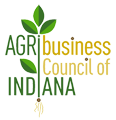|
2025 Kentuckiana Crop Production Seminar December 2-3, 2024 Register today!AGENDA: SPONSORSHIP OPPORTUNITIES:
Meeting sponsorships are available, and companies will be recognized throughout the seminar and on signage at the event and at the networking reception. Exhibit tables are included in the sponsorship and will be set up in the main hall for attendee networking during both days of the seminar. One meeting registration is included with the sponsorship. There is also a reception-only sponsorship option. See registration form for details REGISTRATION:
The Kentuckiana Seminar is divided into two days. When registering, attendees should indicate which day (or days) they will be attending and pay the accompanying registration fee. Pre-registration is not required but is highly encouraged in order to have enough meals prepared for all attendees. Please send the registration form and payment to the ABAK office at:
340 Democrat Drive
Frankfort, KY 40601
You may email Tiffany Webb at [email protected] or register online here. If you choose to register on-site, please have your check, money order, or credit card ready at registration table check-in.
CONTINUING EDUCATION CREDITS:
There are opportunities to earn CEUs for Certified Crop Advisers and Indiana and Kentucky certified applicators. CEU Credits for this conference have been requested but have not yet been approved. The final number of credits approved may vary from the information listed below and subject to Indiana CCH rules on maximum number of credits allowed per meeting. Check the website for final approved credits: www.kyagbusiness.org. Credits Applied For: CCA Credits applied for: NM- 5 | SW- 2 | PM- 3 | CM- 5 ACCOMMODATIONS: Overnight accommodations can be made by contacting the French Lick Hotel at 1-844-241-6361. The group room rate is $149.00 per night at the hotel or $159.00 per night at the French Lick Valley Tower. Please mention the group code 1225KCP and that you are with the Kentuckiana Crop Meeting to receive the group rate. The room block cut-off is November 3, 2025. Please make your reservations immediately!! |
